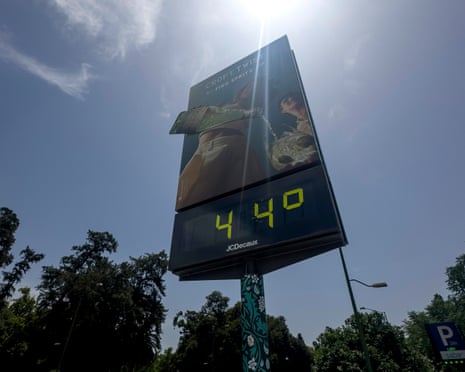Introduction
Europe is battling a historic heatwave, with record-breaking temperatures and emergency alerts issued across multiple countries Europe heatwave. France is experiencing what officials describe as an “unprecedented” situation, with 84 of its 96 mainland departments placed under orange-level alerts — the second-highest warning tier.

France at the Epicenter of Heat Crisis
According to France’s Climate Minister Agnès Pannier-Runacher, the nation is facing a “historic climate emergency.” Schools across nearly 200 locations have been closed or partially suspended to protect children from extreme heat. Emergency medical services are on high alert, and public health advisories urge people to stay indoors and hydrate regularly.
Forest fires in the Corbières mountain region forced evacuations and closed key motorways, though authorities report the blazes are now under control.
Spain and Portugal Shatter June Temperature Records

Spain and Portugal recorded their hottest June days ever. Temperatures soared to 46°C in El Granado, Andalucía, and 46.6°C in Mora, Portugal. Local health services have seen a surge in heatstroke cases. Portugal’s capital Lisbon is among seven districts under the highest red alert level Europe heatwave.
“I can’t sleep, I suffer from heat strokes, and I just can’t focus,” 21-year-old Anabel Sanchez from Seville told Reuters.
Widespread Impact Across Europe
Heat alerts stretch across southern and eastern Europe, including Italy, Germany, the UK, and the Balkans. Italy has placed 21 cities — including Rome, Milan, and Venice — under red alert. Emergency departments across the country are reporting a 10% rise in heat-related admissions.
The UK is also bracing for one of its hottest Junes, with temperatures expected to exceed 34°C in parts of England.
Balkans and Wildfires
Turkey is battling hundreds of wildfires, particularly in the Seferihisar district near Izmir, where dozens of homes have been destroyed. Croatia has also reported coastal wildfires due to severe heat.
Greece has endured days of near-40°C temperatures, with fires ravaging towns near Athens. Serbia recorded its hottest day since records began, while Sarajevo and Skopje saw temperatures hit 38.8°C and 42°C, respectively.
Environmental Consequences

Beyond the immediate health crisis, the heatwave is having long-term environmental effects. In the Adriatic Sea, warmer waters are encouraging the spread of invasive species like the poisonous lionfish. Alpine glaciers are under increasing stress due to persistent high temperatures, exacerbating melting trends.
Climate Change: A Driving Factor
While individual weather events can’t be entirely attributed to climate change, scientists agree that such extreme heatwaves are becoming more frequent and intense due to global warming. The Intergovernmental Panel on Climate Change (IPCC) warns that unless emissions are drastically reduced, such crises will only escalate.
Conclusion
This summer’s heatwave serves as a grim reminder of the climate emergency. With temperatures continuing to rise and infrastructure buckling under the pressure, European countries must act urgently — not just to protect public health, but to accelerate their climate mitigation efforts.

Further Reading
External Sources










